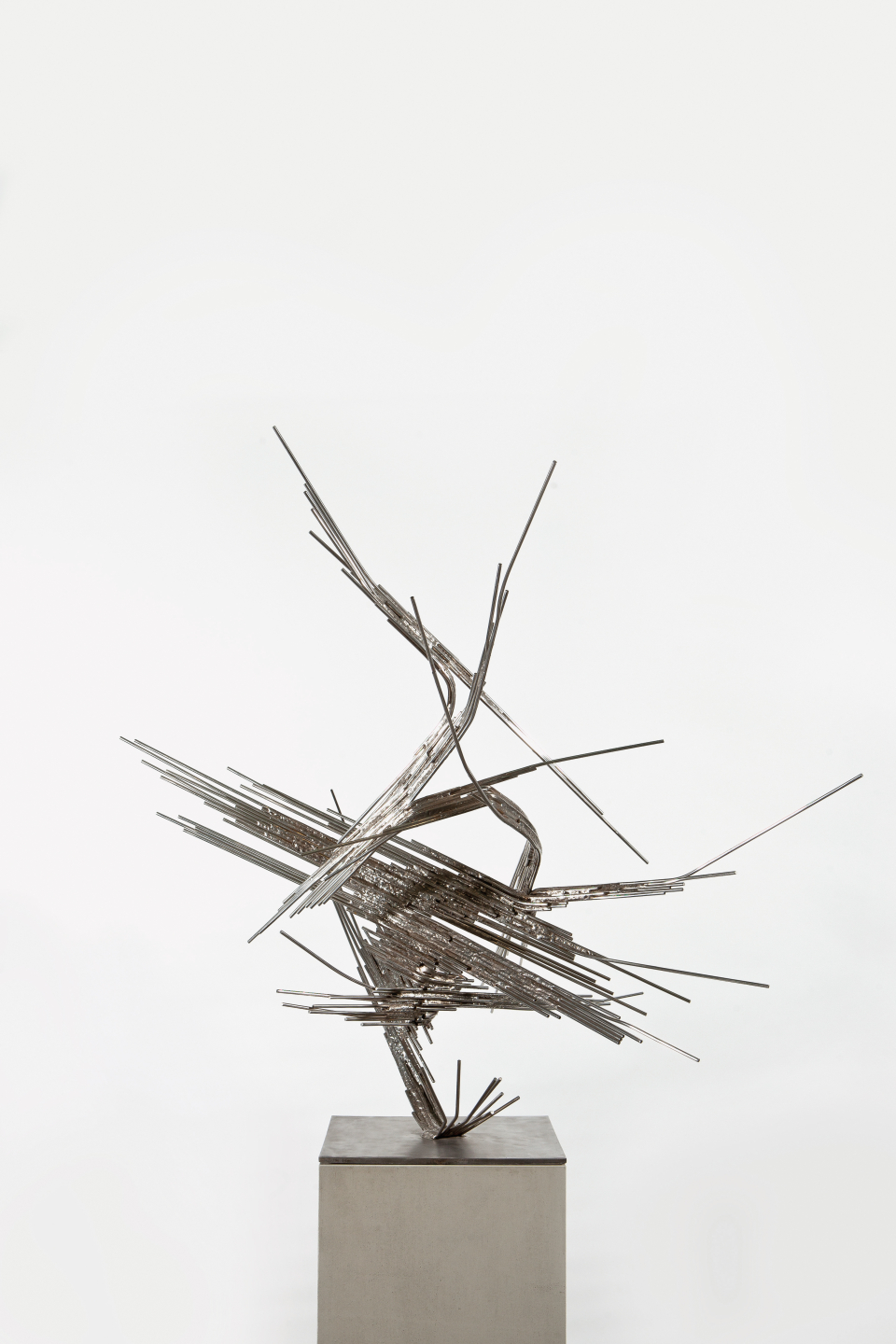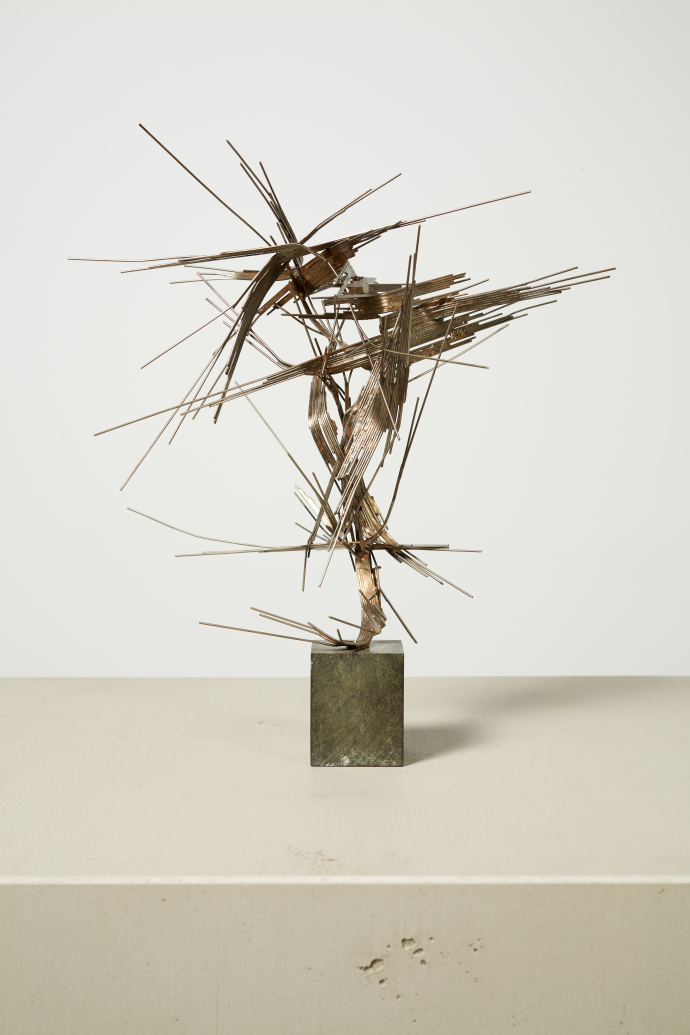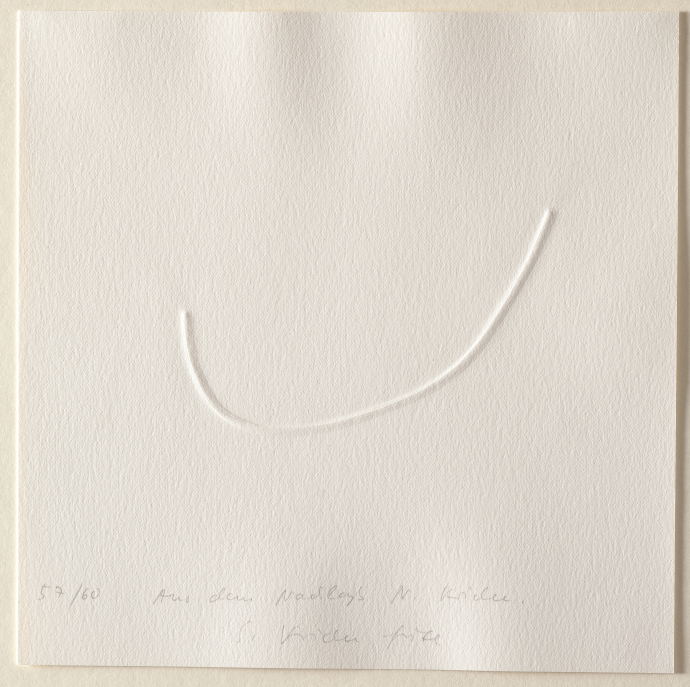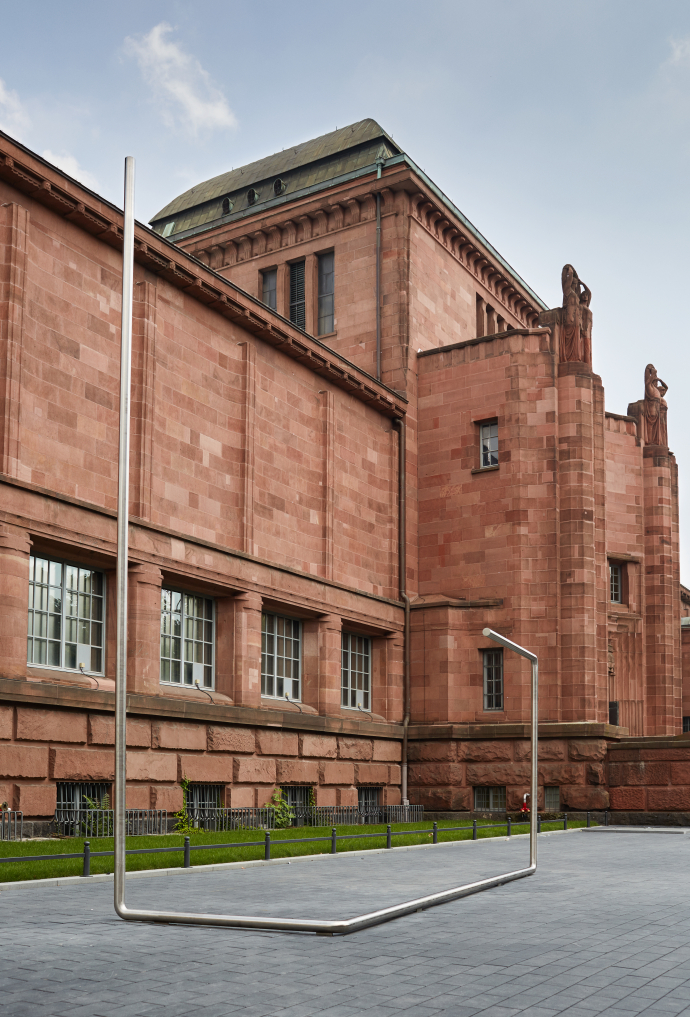nicht ausgestellt
Einstieg
Ab 1949/1950 nimmt die Kategorie der Raumplastik im Werk von Norbert Kricke eine zentrale Stellung ein. Mit ihr realisiert der Bildhauer und spätere Direktor der Düsseldorfer Kunstakademie (1972–81) ein Programm, in dem Bewegung und Rhythmus eine spannungsvolle Einheit bilden. Im Titel klingt ein wesentlicher Bezugspunkt seiner Arbeit bereits an: der umliegende Raum, in dem eine Plastik erst ihre volle Wirkung entfaltet. Denn Krickes abstrakte Drahtkonstruktionen zielen vor allem auf ihre Umgebung. Verschweißte Stäbe aus Stahldraht und Stahlrohr greifen weit in den Raum, streben in unterschiedliche Richtungen und bilden dynamische Schwünge. Das Volumen der Plastik ist dabei stark reduziert, Masse und Dichte scheinen überwunden. Der traditionellen Statik der Bildhauerkunst setzt Kricke eine Kunst der Schwerelosigkeit entgegen, die trotz der filigranen Eisenstäbe überaus energiegeladen wirkt. Symbolisch wird hier auch der Freiheitsdrang spürbar, der das Gesamtwerk des Künstlers durchzieht. Mit seinen Raumplastiken zählt Kricke zu den Hauptvertretern einer nach dem Zweiten Weltkrieg neu ausgerichteten Strömung der Bildhauerkunst, die sich der Abstraktion verschrieb.
Einstieg
From 1949/50 on, the category of spatial sculpture occupied a central position in the work of Norbert Kricke. With this genre, the sculptor and later director of the Düsseldorf Academy of the Arts (1972–81) realized a program in which movement and rhythm form a tension-laden unity. The title already announces an important point of reference for his work: the surrounding space within which a sculpture first unfolds its full effect. Kricke’s abstract wire constructions primarily engage with their environments, with welded rods composed of steel wire and piping extending deep into the space, striving in different directions to form dynamic sweeps. The volume of the sculpture is radically reduced, and mass and density appear to be overcome. Kricke replaces the traditional statics of the sculptor’s art with an art of weightlessness, which despite the filigree iron rods appears extremely dynamic. The work also manifests the desire for freedom which can be found throughout the artist’s oeuvre. With his spatial sculptures, Kricke is one of the main representatives of a new current in sculpture committed to abstraction that emerged after World War II.
Leihgabe des Förderkreises für die Kunsthalle Mannheim e.V. seit 1998; Schenkung durch Heinrich Vetter, Ilvesheim



